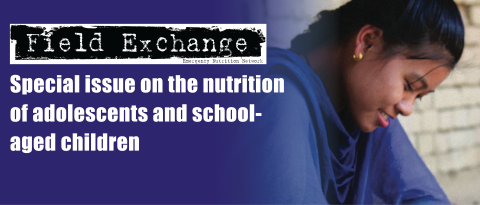What’s new for adolescent nutrition in the DHS Program
By Rukundo Benedict
Rukundo Benedict is the Lead Nutrition Research Associate for The DHS Program. She is a public health nutrition practitioner with expertise in infant and young child feeding (IYCF), adolescent nutrition, community health systems, and the delivery of integrated interventions in low-resource settings. She completed her PhD in International Nutrition from Cornell University and holds an MSPH from Johns Hopkins Bloomberg School of Public Health.
The Demographic and Health Surveys (DHS) Program1 is a leading source of nutrition data in low- and middle-income countries. Through nationally-representative household surveys, the DHS Program collects nutrition information from children under five, women aged 15-49 years and, in some surveys, from men aged 15-49 years. With the increased global focus on adolescent nutrition, more data is needed to understand the unique nutrition challenges facing this population and to help to inform and guide policies and programmes worldwide.
The DHS Program has routinely collected several nutrition indicators for adolescents aged 15-19 years including anthropometric measurements, anaemia and iron-containing supplementation during pregnancy. Users can explore these indicators for adolescents across countries in the adolescent nutrition StoryMap2, the related report3 and by using STATcompiler4. Raw weight, height and date of birth data is available for 15-19 year olds and can be used to calculate population nutritional indicators such as stunting, underweight and overweight. While many previous DHS country reports have presented under- and overweight proportions based on adult body mass index (BMI) definitions, DHS will now use BMI-for-age z-scores for adolescent nutritional status.
In addition, the DHS Program standard Model Questionnaires are updated in each five-year phase of the DHS Program. In the DHS-8 update5, several new nutrition-related indicators have been added. These new indicators include information on dietary diversity, unhealthy food consumption and maternal diet counselling during antenatal care. Stakeholders will be able to disaggregate the data by age to specifically explore the adolescent nutrition context.
Strengthening the capacity for data use among key stakeholders is an important goal of the DHS Program. To facilitate the use of DHS nutrition data, the DHS Program has developed an eLearning course entitled ‘Nutrition Indicators in Demographic and Health Surveys’. The course is designed to orient programme managers, policymakers, government officials, representatives from civil society, multilateral agencies and others to the nutrition indicators reported in the DHS Program surveys. The course is organised into 12 modules covering nutritional status for children, adolescents and adults, anemia, infant and young child feeding, womens’ dietary practices, coverage of nutrition interventions and more. The course will launch later this year on the DHS Program Learning Hub[6]. It will be available for anyone to use free of charge.
For more information, please subscribe to the DHS Program nutrition newsletter at www.dhsprogram.com/
1 https://www.dhsprogram.com/
2 https://dhsprogram.com/storymap/adolescent-nutrition/?utm_source=Website&utm_medium=nutrition
3 https://dhsprogram.com/publications/publication-cr47-comparative-reports.cfm
4 https://www.statcompiler.com/en/#
5 https://blog.dhsprogram.com/nutrition-data-in-dhs-8/
6 https://learning.dhsprogram.com/


